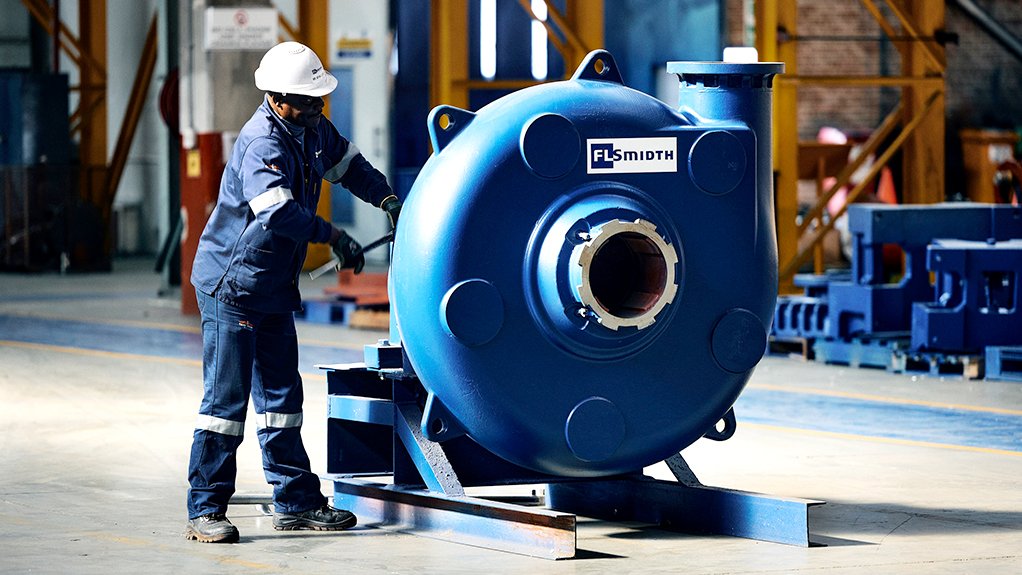Ensuring pump efficiency is seen as a key factor in conserving energy and advancing decarbonisation in the mining sector.
Minerals process specialist FLSmidth highlights two key aspects that reduce efficiency in slurry pumps as suction side recirculation and mechanical grinding between the casing and the impeller, asserting that the company’s wear ring technology on its KREBS pumps significantly reduces both of these factors, leading to lower power draw and longer pump life.
“Through our case studies, we have seen power draw being cut by 5% to 10% for the same flow and head with the application of KREBS pumps,” says FLSmidth sub-Saharan Africa, Middle East and South Asia VP: pumps, cyclones and valves Stephan Kruger. “Similarly, we have measured the impact on pump life, and have shown that the life of wet end parts can be lengthened by one and a half to two times.”
FLSmidth GM: operations Derek Lane explains that adjusting the wear ring allows the speed of the pump to be maintained as a constant, rather than users having to speed up the pump in response to the impact of grinding and wear. The wear ring in KREBS pumps can be adjusted so that it continues drawing the same power for the required pressure, which helps to minimise energy consumption.
The regular adjustment of the pumps can also be done without shutting down the pump and disrupting operations, says FLSmidth Central and Southern Africa sales manager: pumps, cyclones and valves Morne Potgieter. This also contributes to the general continuity and efficiency of the whole operation.
“The wear ring can be simply adjusted by hand while the pump is running, and without the use of any special tools,” he notes. “This allows the gaps to be kept as small as possible to avoid recirculation inside the pump, while maintaining speed and pressure.”
The company deploys trained field service teams and offers training to customers to ensure that the wear ring adjustment is correctly applied.
The life span of the KREBS pumps is further enhanced by selecting the correct materials for construction to suit a specific application, says Kruger. “The choice of material is based on the application requirements and in particular minimising wear. There are a number of factors considered which determine the material of construction such as pump size, impeller size and tip speed as well as slurry hardness.”
Materials used in the construction of slurry pumps are classified into two main types: metals and elastomers. For metal pumps high-chrome alloys, hypereutectic alloys, hypoeutectic alloys and stainless steels are commonly used. Elastomer options vary between natural rubber, polyurethane and synthetics such as neoprene.
Kruger adds that the use of the correct materials helps to reduce the amount of scrap produced as a result of equipment replacement.
EMAIL THIS ARTICLE SAVE THIS ARTICLE
To subscribe email subscriptions@creamermedia.co.za or click here
To advertise email advertising@creamermedia.co.za or click here













